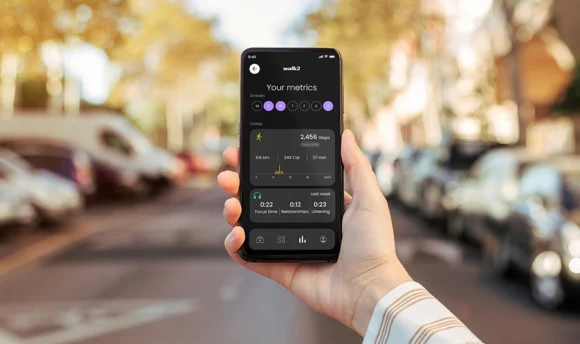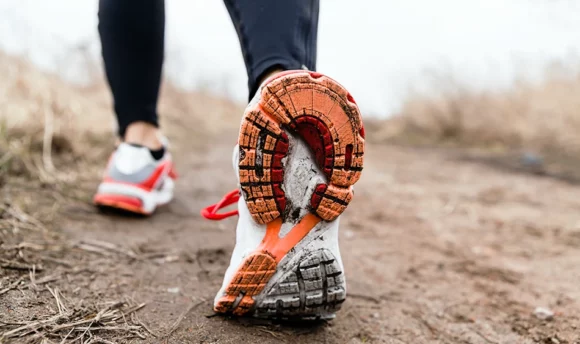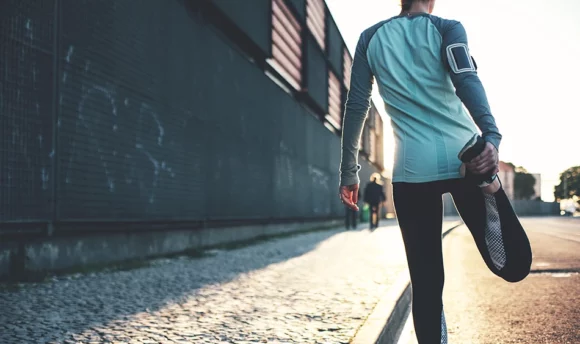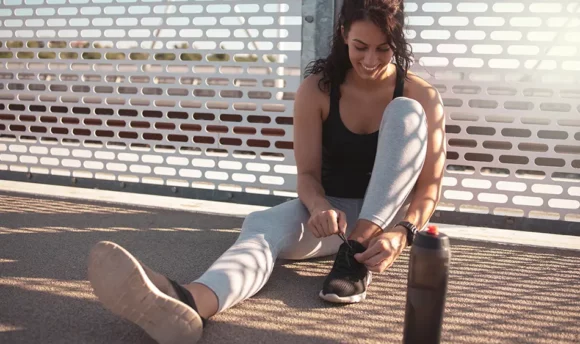8 Best Ways to Help Carry Your Phone While Running
You don’t need to break the bank just to carry your phone for a running workout. It’s time to get creative with your phone storage ideas.
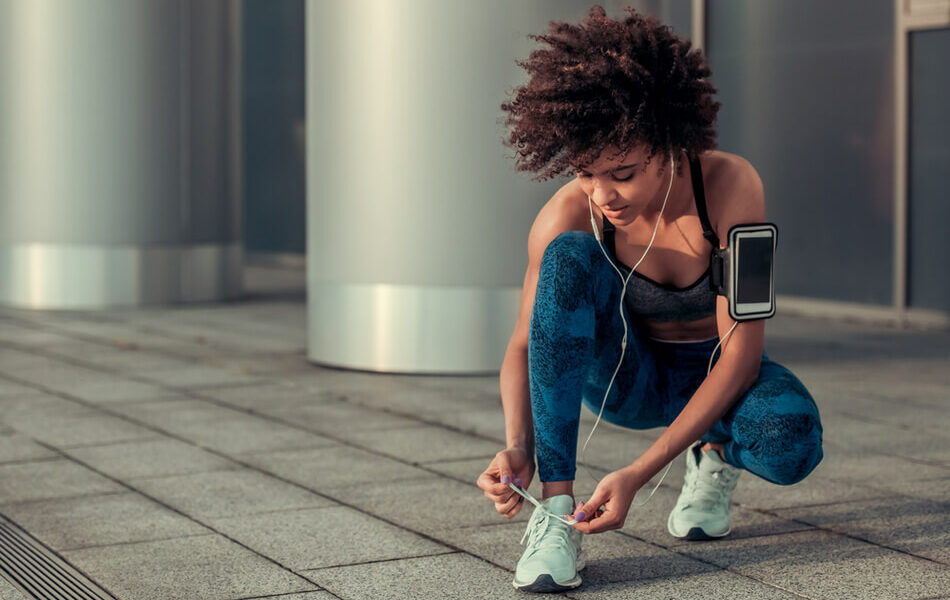
Do you often wish you could run with your phone instead of leaving it at home? Do you find yourself in a dilemma as to where to put your phone during a run or workout?
Many runners carry their phones for different reasons. Some take their mobile device for location tracking, finding their way, calling for help, or checking messages. Whichever your personal preference, there’s a storage method to help you run hands-free.
Some methods can pose additional costs, but there are methods where you don’t need to go over budget. By the end of this article, you’ll be aware of cost-effective ways of storing your phone during your run.
5 Low-Budget Ways to Carry Your Phone While Running
Not everyone can afford an armband or extra running gear. Some low-budget ways to store your phone while you work out running are pockets with zips, sports bras, etc.
1. Shorts with zipper pockets
A common way to store your phone is in the pocket of your shorts. Shorts are typically the fastest way to keep your phone out of the way. But will those pockets keep your phone from distracting you?
When running pants are too loose-fitting, your phone will flap around while you run and interrupt your running flow. It’s worse if there’s no zipper. You’ll be tempted to slow down to accommodate the free, unprotected weight in your pocket.
If you choose to keep your phone in your pocket, the pocket should have a zipper. Your phone might fall out of your side pocket without a locked zipper while on a low or high-speed run.
Not only do you need zipper pockets, but the pockets themselves should also be large enough to contain your phone. Most people have larger phones these days, and a small pocket will be too small to put your phone in.
If you can’t find shorts with zippers, try out biker shorts with pockets. They’re more tight-fitting and less likely to flap around and cause discomfort. Read the reviews online before buying them. Look out for what runners are saying.
2. Between the body and compression shorts
Compression shorts are made with stretchy material that clings tightly to your body while applying pressure to your thighs and buttocks. A National Library of Medicine study suggests that wearing compression shorts helps runners prevent muscle inflammation, damage, and pain.
In addition to those muscle benefits, compression shorts offer low-budget phone storage. But some compression shorts don’t have pockets. In this case, you can wrap your phone in a Ziploc plastic bag and slip it between the bands of your shorts and your body.
If you don’t have a plastic bag, ensure your compression shorts are made of moisture-wicking materials. Such materials draw away excess sweat and dry quickly. The presence of the moisture-wicking fabric can considerably prevent water damage to your phone.
The disadvantage of this method is that your phone might fly away if it’s not tightly secured. Instead, go for compression shorts with a zipper pocket. It’s one of the best ways to store your phone if it fits appropriately to the body.
3. In a sports bra
Although keeping your phone in your sports bra isn’t recommended, it’s still a viable method of carrying your phone during your run. Sometimes, sports bras come with pockets on the back, so you should only use this method if your sports bra has a built-in pocket.
If you place your phone anywhere else aside from the back, you could endanger it with high temperatures or heat from your body. A disadvantage of using this method is that the chest and upper back area are usually affected by sweat a lot.
Sweat from your back might enter the phone and cause water damage. To prevent this from happening, some people put their phone into a rubber bag or nylon to protect it from moisture, and others prefer a phone case.
Also, placing your phone in your back pocket might be restrictive for people who like to check their phones regularly. It wouldn’t be easy to slide it back in or take it out. You might require the help of someone else to place it back into your sports bra for you.
If you think buying another sports bra because of the pocket is an additional cost you can’t afford, a zipper pouch with a hook also works. Place your phone into the pouch, zip it up, and slide it into the back of your bra.
The problem with both sports bra methods is that it doesn’t allow quick access to your phone compared to armbands or hydration vests.
4. Carry it in your hand
Some people might find carrying a phone in their hand uncomfortable. There are more efficient ways to hold your phone while running than carrying it plainly.
For example, you could use a phone pouch with a hand strap. Slip your phone into the case and grip it through the strap or handle. Make sure it’s made of water-resistant materials that can absorb sweat from your hand and protect the phone from rain.
A phone and hand strap also allows you to check your phone quickly. You’ll only need to turn the phone around to see the screen.
To balance it out, carry an object of similar weight on the other hand and turn it into a complete fat-burning workout. A study by the Indian Journal of Forensic Medicine & Toxicology concluded that carrying weights in both hands during your run burns additional calories.
Balancing the weight will help you maintain a good running form. Have your personal trainer assess your gait before and after the added weight to ensure you’re not causing any harm with the extra weight.
5. Underhand band
A hand band or wrist band is a band that surrounds the wrist and is primarily used to soak up sweat and prevent it from running onto the palms. You don’t need to be a tennis player to prevent sweat from running down your wrist or forehead.
While you’re doing that, try slipping your phone under your wrist or hand band. It works as a substitute on days when your armband isn’t available. Although, you shouldn’t rely on this method because it presents a less practical approach for your handheld device.
Another issue you might have is the extra weight on your wrist that can get uncomfortable and affect your running biomechanics. This method makes you more cautious of the phone slipping or moving under the band or simply flying off.
Remember, this isn’t a long-term solution, so do look into getting other storage methods to keep your phone secure while running.
Other Ways to Carry Your Phone While Running
Beyond the apparent phone holder like a phone pocket on your shorts, there are other ways to carry your phone while running. They might be pricy, but why not get them if you can afford them?
Running vest
A running vest is a backpack designed with multiple pouches that can contain various items like your phone, wallet, money, ID cards, keys, and water bottle. A running vest is appropriately designed, so you don’t need to worry about the weight distribution being too different from your previous runs.
It’s also called a hydration pack or hydration vest. Choosing the best hydration pack is as essential as selecting suitable clothing. Running becomes more fun once you have the right gear to wear and a convenient and secure way to carry your phone.
The hydration pack itself should be lightweight and help distribute the weight of your items evenly. The weight distribution prevents pain in your neck, shoulders, and back.
While shopping for your running vests, consider your running distance, items you need to carry, and type of run. A race vest with a smaller volume works for shorter weekend runs. You’d naturally bring more things if you’re going trail running and would need a higher volume vest.
Running belt
A running belt, also called a hydration belt, performs the same function as a hydration vest, except it doesn’t fit as many items as the vest. However, running belts allow you to carry the basics like your phone, money, keys, and water bottle to help you stay hydrated.
The water bottle should be small and not too large not to disrupt your running form. The best ones should have an adjustable band that tightens, fits snugly around the waist, and doesn’t bounce. The perfect hydration belt depends on each runner’s needs. For example, runners going around the house or neighborhood might be alright with a smaller, more streamlined strap that allows them to squeeze their phone into the phone pocket.
On the other hand, an avid runner would require a double-duty belt with more than a phone pocket for carrying phones and keys for long runs. In addition, they’ll want water, snacks, gel, and maybe a mini-first aid kit.
A larger belt is also required for a large phone with a display wider than 6-inches. In addition, consider the type of closure on the belt. Is it a buckle or spandex loop? Most belts feature the buckle lock with the risk of the belt falling off, while the spandex loop locks more securely.
Armband
An armband is a device with a compartment for your phone and is strapped to your upper arm. Some give you easy access to your phone while allowing you to perform activities without any distractions.
Make sure the band has a snug fit around your arm. A loose fit spells trouble for you and your phone. You wouldn’t be able to focus while running cause you’ll be more concerned with keeping your phone on your arm and off the floor.
Armbands work well with short sleeves and sleeveless tops for running. You might notice some tan lines after running in the sun, but that’s normal for clothing and skin. Just remember to use sunscreen before getting under the sun.
It would help if you also had a water-resistant band in cases of sweat and rain. You should seal your phone in a plastic bag if it’s raining before heading out.
A Word From Our Coach
Your running performance depends on the weather, physical fitness, age, ability, and running gear. If you’re the type that likes to take your phone with you to listen to some music or keep tabs on messages, then you should be careful with how you pick your phone holder.
Generally, we do not recommend carrying your phone in your hand, especially when the weather is hot or humid. Sweat will quickly make your phone uncomfortable to hold and might cause your phone to slip out of your hand.
You need both hands to steady yourself if you’re about to fall. A hand that’s busy holding your phone will make your fall harder on your knuckles. Aside from carrying your phone, consider how other essentials might fit into your storage space. Also, look out for vests and waist pouches with a separate pocket for your cards.
If you don’t want to position your phone in a conspicuous spot, keep an eye out for running shorts or running leggings with a hidden pocket. Remember, your choice shouldn’t interfere with your training plans.
Conclusion
If you cannot afford a running belt, armband, or running vest, try low-cost options like slipping your phone into the bands of your compression shorts. And you are set to start running or eventually want to run more than 5 miles a day.
You can also place your phone into a zipper pocket or carry it in your hand. Try out as many of these less expensive methods until you find one you absolutely love and that works for you.

















































 Select your language:
Select your language: 





